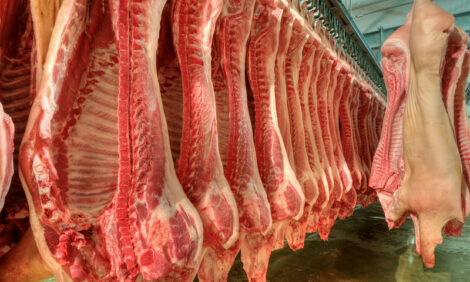



Hog Profits Threatened By Corn Prices
INDIANA - “Not much change“ is the theme of the latest Hogs and Pigs inventory report from USDA. Producers continue to avoid expansion in the face of strong profits over the past two years, reports Chris Hurt.
 Chris Hurt Chris HurtExtension Economist Purdue University |
The industry is expected to continue to operate at modest profits through the first-half of 2007, but the potential for higher corn prices appears to be the biggest threat to this thin profit potential.
The breeding herd on June 1 was up 1 percent from the inventory of a year ago. Indiana led the increase with a 20,000 head increase and South Dakota producers added 15,000 head to the breeding herd. States that increased by 10,000 head included, Colorado, Iowa, Missouri, and Nebraska. Farrowing intentions for this summer were unchanged from last year and fall farrowing intentions were up a modest 1 percent. The number of pigs per litter continues to set new records and averaged 9.06 pigs for the first-half of 2006. The number of market hogs was fractionally higher, but generally less than expected prior to the report. The number of pigs that will come to market primarily in July and August were unchanged from last year and the fall supply should be about one percent higher than last fall.
Given the stability of inventory numbers, pork supplies are expected to be up only 1 percent this summer and 2 percent in the fall. For the first-half of 2007, pork production is expected to be up in a range of 1 to 3 percent. Hog prices for the first-half of 2006 averaged only $45, compared to $52 in the first-half of 2005. This represented a 13 percent drop with pork supplies up only 1 percent. These very large changes in price with only small changes in supply have been characteristic of the market since the late 1990’s. Hog prices provided a surprising upward surge this spring as prices moved from the high $30 in early-April to the higher $50s by mid-June, supported by smaller than expected slaughter counts. Third quarter prices are expected to average in the $46 to $48 range. A transition from high prices in the high $50s in early-July to the mid-$40s by the end of September is expected. For the fall and winter quarters, prices are expected to average about $44. Some improvement is anticipated into the spring of 2007, perhaps pushing prices to an average near $46.
Hog price prospects for the coming 12 months have “perked up” a bit, but anticipated costs are moving up also. Given current corn and meal prices, estimated costs will move from the high $30 this past spring to about $43 to $44 by the spring of 2007 as a result of higher corn prices. The industry is expected to experience profit margins of about $7 per live hundredweight this summer, but only $1 to $3 per hundredweight from the fall through the spring of 2007. The industry has been profitable since the spring of 2004, so the current quarter will be the tenth consecutive quarter of profits. This is the longest run of profits since the mid 1980’s.
Since there is little change in hog numbers, pork supplies do not appear to be a major threat to profits at this time. So what are the threats? The two most important are the potential for rising corn prices and potential loss of pork exports with reopening of the Asian beef market. The larger of these two is clearly corn price uncertainty. Current forecast for above normal temperatures and below normal precipitation for the mid-July pollination period are of concern. In addition, rising corn utilization for ethanol means a close-to-normal crop is needed to avoid some price rationing in coming months.
It may be time to fill every inch of space with corn as the last of the relatively cheap corn may be available late this summer and fall. With ending stocks of over 2.0 billion bushels, basis levels should be weak and futures premiums for next spring and summer are large. This means that ownership of cash corn from now through harvest will likely pay handsome dividends for hog producers.
Source: FarmDoc - 9th July 2006








